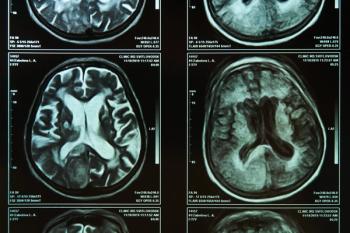
Racism, Policing, and COVID-19 Disparities: We Need Action!
This moment in history cannot be lost. When you ask us if we are okay, be prepared to hear us say we are not . . . and never have been. Then be prepared to do more.
COMMENTARY
“A virus drove us indoors. A violent death drove many of us into the streets.”
-G. Gabrielle Starr, President of Pomona College
Overall, racism exists and racial disparities in deaths due to police brutality or COVID-19 present important opportunities to consider the role of race, systemic, and systematic biases in medicine. The codes of ethics for physicians, major medical organizations (eg, American Psychiatric Association), honorific societies (eg, Alpha Omega Alpha), and police officers (eg, The International Association of Chiefs of Police) speak to an implicit social contract with the public. Since Hippocrates, physicians have taken a binding oath to guide the moral and ethical treatment of patients while law enforcement officers take an oath to protect and serve. It is a physician’s and police officer’s duty to respond in a medical and public health emergency. Racism, disparities, and police violence against unarmed black men (and women) represent public health epidemics deserving immediate responses.1
We don’t need another committee
When the COVID-19 pandemic ignited and spread like wild-fire, the health professions robustly responded. As stated in the Hippocratic oath, physicians are asked to do more and to promote healing.
“I will use treatment to help the sick according to my ability and judgment, but never with a view to injury and wrong-doing . . . Into whatsoever houses I enter, I will enter to help the sick, and I will abstain from all intentional wrong-doing and harm, especially from abusing the bodies of
Hippocrates
Hence, we must ask whether our clinical spaces are safe spaces for all (or some)? How do we reconcile that a leading cause of death for black men is police violence? Where is the help we promised the community? Where is the leadership needed within our institutions and professions?
In the Fall of 2014, Black undergraduates across US college campuses engaged in
There are ethical considerations and societal implications when physicians are deaf, silent, and fail to act. Two examples of ethical lapses involve Nazi
There will be continuing surges in COVID-19 cases and deaths as well as a
We are at a turning point for law enforcement and the health professions where we must ask whether our silence implies consent. Every human body (including black and brown bodies) deserve respect. Every person should have an opportunity to go as far as their hard work and talent can take them. Black and brown people who die before their time due to racism, COVID-19, or police brutality
On June 1, 2020, there were 1,783750 million COVID-19 cases and 98,536 deaths due to COVID-19 nationwide.11 The US began to loosen stay at home restriction while the CDC warned us about additional COVID-19 spikes and hotspots. On June 9, 2020, protests continued as the families of Ahmaud Arbery, Michael Brown, Eric Garner, Botham Jean, Trayvon Martin, and Pamela Turner gathered to attend Mr Floyd’s homegoing funeral. Mr George Floyd was buried next to his mother. Unfortunately, there have been and will be other
This moment in history cannot be lost. When you ask us if we are okay, be prepared to hear us say we are not . . . and never have been. Then be prepared to do more than you have before. Tell us what you plan to do as an ally and
In the end, we will remember not the words of our enemies, but the silence of our friends.”
-Reverend Dr. Martin Luther King, Jr.
Recommendations
1. Recognize that racism, disparities, and police violence occur within societies tolerating them. Commit to denouncing discrimination. Commit to be an antiracist by condemning groups who spread racist rhetoric, including those purported to be in “jest.” Commit to reviewing and incorporating these antiracist tenets into the patient bill of rights and within APA ethics documents as appropriate. Commit to sharing these tenets with other professional societies and accrediting bodies. Believe that we can eliminate disparities and police violence.
2. Recognize that implicit, conscious, and unconscious bias operates at the individual, systemic, and institutional level; leading to suboptimal health care access, quality, treatment, and outcomes including mental health care. Develop and create metrics, and collect and share data focused on the social determinants of health and racial and ethnic disparities to: improve health care quality and patient outcomes; inform and execute policies for hospital administration; improve organizational effectiveness; and share with those accrediting and regulating (eg, JCAHO [Joint Commission on Accreditation of Healthcare Organizations], CMS [Centers for Medicare & Medicaid Services], APA [American Psychiatric Association]) health care organizations and health professionals. Incorporate key components into the learning plans for training programs, continuing medical education, maintenance of certification, and accreditation and recertification activities. Commit to eliminating disparities in psychiatric care and ensure high quality care for minority people by data sharing with other disciplines and developing a robust research agenda using a race equity lens.
3. Medical decision-making is highly idiosyncratic, and minorities report less trust and involvement in their care. Furthermore, recognize how implicit, conscious, and non-conscious bias, stigma and stereotyping, verbal and non-verbal communication styles, and cultural differences influence how people express themselves in good and bad times (eg, grief) and may influence the clinical interaction and decision-making. Understand trust is earned and easily lost. Incorporate security standby requests data and other measures related to patient care as part of the continuous quality improvement process and commit to auditing your institution’s data. Educate yourself about types of privilege and bias, and how this influences interactions with people with your ecosystem (including patients).
4. APA statements have addressed the lack of minorities in psychiatry and have expressed concern about the pipeline. Commit to make additional investments in activities designed to diversify and enhance the psychiatric pipeline. The National Academy of Medicine and others speak to the importance of what minorities bring to the quality of the science. Ginther and colleagues5 have reported on race-based differences in funding of NIH Grants. Commit to an inclusive culture by recruiting, mentoring, and retaining minorities within psychiatry, academy, and scientific pipeline. Support minority, marginalized, and vulnerable members in our professional communities and societies for inclusion and leadership (even if their scholarship is “different”) by sponsoring and nominating them for awards, honors, and appointments. Commit to extinguishing racism from the scientific review process. Commit to finding the leadership in your midst by looking to see who is on your committees. If they are not representative or do not include diverse voices, work to change them.
5. Work to build trust via robust truth and reconciliation processes such as dedicating plenary talks and conducting a full day seminar within the annual meetings to address these issues. Examine psychiatry’s legacy including historical wrongs and missed opportunities for the full participation of black psychiatrists as well as harm done to minority patients and their communities. Acknowledge how the field of psychiatry may have benefitted from discrimination, racism, and racist behaviors, and apologize to those impacted and affected. Commit to broadly disseminating what you learned to the mental health community (eg, psychologists, social workers etc) as well as current and future patients and clients.
6. Enhance the quality of psychiatric care by removing barriers to care. Commit to enhancing capacity and access to high-quality psychiatric care while ensuring high-quality psychiatric care for racial and ethnic minorities. Commit to addressing race-based micro-aggressions and macro-aggressions and learning about race-based trauma. If needed, seek resources within and outside your community. This will require learning to be comfortable with being uncomfortable and committing to be a health care partner to optimize patient and population health and well-being. Commit to actively listening to the patient’s story without interruption.
7. Recognize it is not the victims’ job to educate you. Commit to doing the hard work over the long run.
Acknowledgements
The authors thank Michelle B. Riba, MD, professor of psychiatry at the University of Michigan for her ongoing inspiration and support. We acknowledge those who have come before us, the ancestors whose stories have prompted us to write our own, and those who will come after us. We acknowledge those doing ongoing work towards social justice in word, verse, and song.
Above all, we acknowledge the lives of those known and unknown lost before their time.
References
1. Hardeman RR, Medina EM, Kozhimannil, KB. Structural racism and supporting black lives: the role of health professionals. N Eng J Med. 2016;375:2113-2115.
2. Byng R. #BBUM Hashtag sparks dialogue about diversity at the University of Michigan. Huffington Post. November 20, 2013. Accessed August 19, 2020.
4. Charles D, Himmelstein K, Keenan W, Barcelo N. White coats for black lives: medical students responding to racism and police brutality. J Urban Health. 2015;92:1007-1010.
5. Ginther DK, Schaffer WT, Schnell J, et al. Race, ethnicity, and NIH research awards. Science. 2011;333:1015-1019.
6. Peck E. The Reckoning over workplace racism has begun. The Huffington Post. June 9, 2020. Accessed August 19, 2020.
7. Moodley K, Kling S. Dual loyalties, human rights violations, and physician complicity in apartheid South Africa. AMA J Ethics. 2015;17:966-972.
8. Lindert J, Stein Y, Guggenheim H, et al. How ethics failed: the role of psychiatrists and physicians in Nazi programs from exclusion to extermination, 1933-1945. Public Health Reviews. January 2013. Accessed August 19, 2020.
9. Meyer R, Madrigal AC. A devastating new stage of the pandemic. The Atlantic. June 25, 2020. Accessed August 19, 2020.
10. Starr GG. After George Floyd’s killing, what academics can do. The Chronicle of Higher Education. June 1, 2020. Accessed August 19, 2020.
11. Lutton L. Coronavirus case numbers in the United States: June 1 update. Medical Economics. June 1, 2020. Accessed August 19, 2020. https://www.medicaleconomics.com/view/coronavirus-case-numbers-united-states-june-1-update
12. Faussett R, Dewan S. Police decisions are scrutinized after Rayshard Brook’s fatal encounter. New York Times. June 18, 2020. Accessed August 19, 2020.
Newsletter
Receive trusted psychiatric news, expert analysis, and clinical insights — subscribe today to support your practice and your patients.













